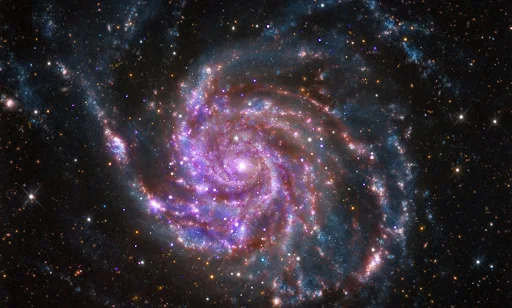The Early Universe: A Hot, Dense Soup of Particles
The early universe was a very different place than it is today. It was incredibly hot, dense, and expanding rapidly. In the first few moments after the Big Bang, the universe was so hot that all matter existed as a plasma, a state of matter in which atoms are stripped of their electrons. As the universe expanded and cooled, protons and neutrons began to combine to form hydrogen and helium nuclei. Electrons then combined with these nuclei to form neutral atoms.
The first few hundred thousand years after the Big Bang were dominated by radiation. The universe was so opaque that light could not travel freely. However, as the universe continued to expand and cool, it eventually became transparent enough for light to travel freely. This event is known as the cosmic microwave background (CMB). The CMB is a faint glow of light that is present all over the sky. It is the oldest light in the universe, and it provides us with a snapshot of the universe at about 380,000 years after the Big Bang.
After the CMB formed, the universe entered a period of darkness. There were no stars or galaxies, just a diffuse cloud of neutral hydrogen and helium gas. However, over time, gravity began to pull this gas together into clumps. These clumps eventually collapsed to form the first stars and galaxies.
The first stars were very different from the stars that we see today. They were much larger and more massive, and they burned through their fuel much faster. These stars also produced large amounts of heavy elements, such as carbon, oxygen, and iron. When these stars died, they released these heavy elements into space. These heavy elements then mixed with the gas between galaxies, and they eventually formed the second generation of stars and galaxies.
Over the past 13.8 billion years, the universe has continued to expand and evolve. Stars have formed and died, galaxies have collided, and new structures have emerged. However, the early universe still plays an important role in our understanding of the universe today. By studying the CMB and other remnants of the early universe, we can learn more about the fundamental laws of physics and the origins of the universe itself.
Here are some of the key events in the early universe:
- The Big Bang: The universe begins as a hot, dense point.
- Inflation: The universe expands rapidly for a brief period of time.
- Electroweak symmetry breaking: The fundamental forces of nature separate into the four forces that we know today.
- Quark confinement: Quarks combine to form protons and neutrons.
- Nucleosynthesis: The first hydrogen and helium nuclei are formed.
- Cosmic microwave background: The universe becomes transparent enough for light to travel freely.
- Formation of the first stars and galaxies: Gravity pulls gas together to form the first stars and galaxies.
- Reionization: The first stars and galaxies emit ultraviolet light that ionizes the gas between galaxies.
The early universe is a fascinating and mysterious place. By studying it, we can learn more about the origins of the universe and the laws of physics that govern it.


